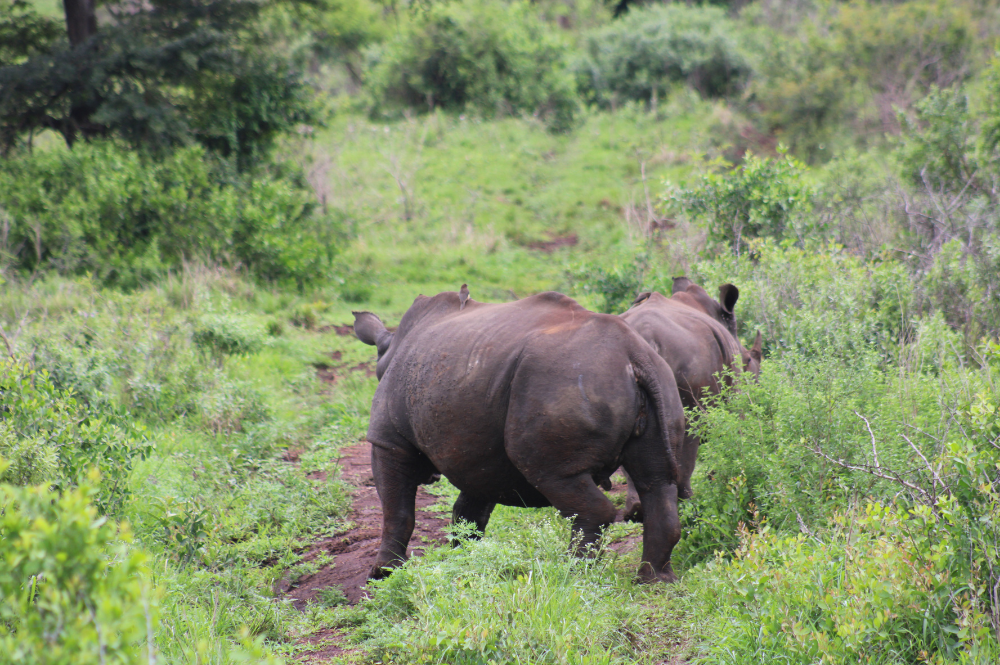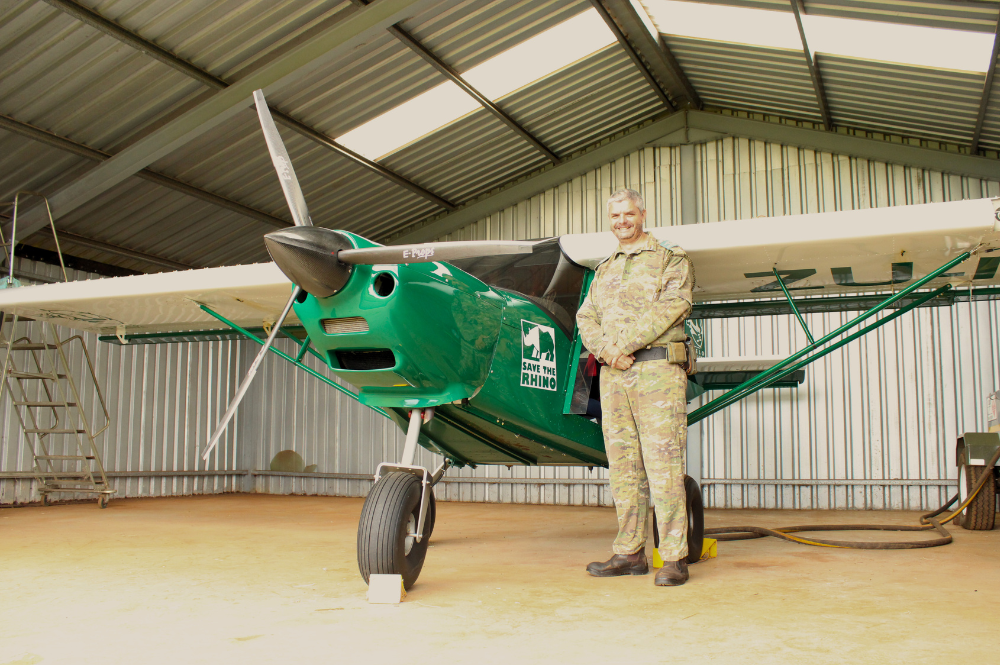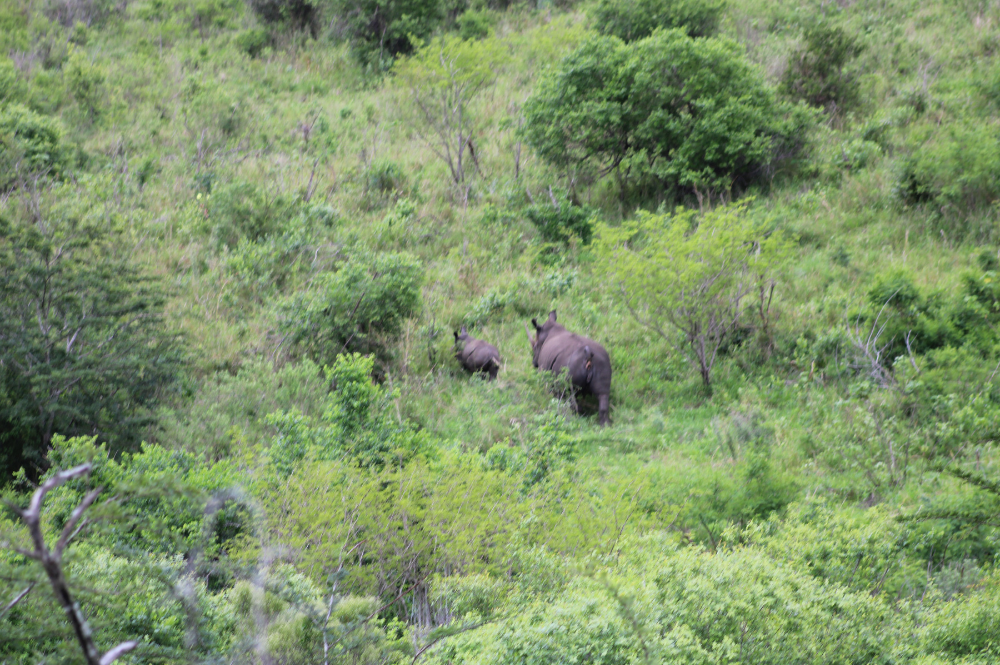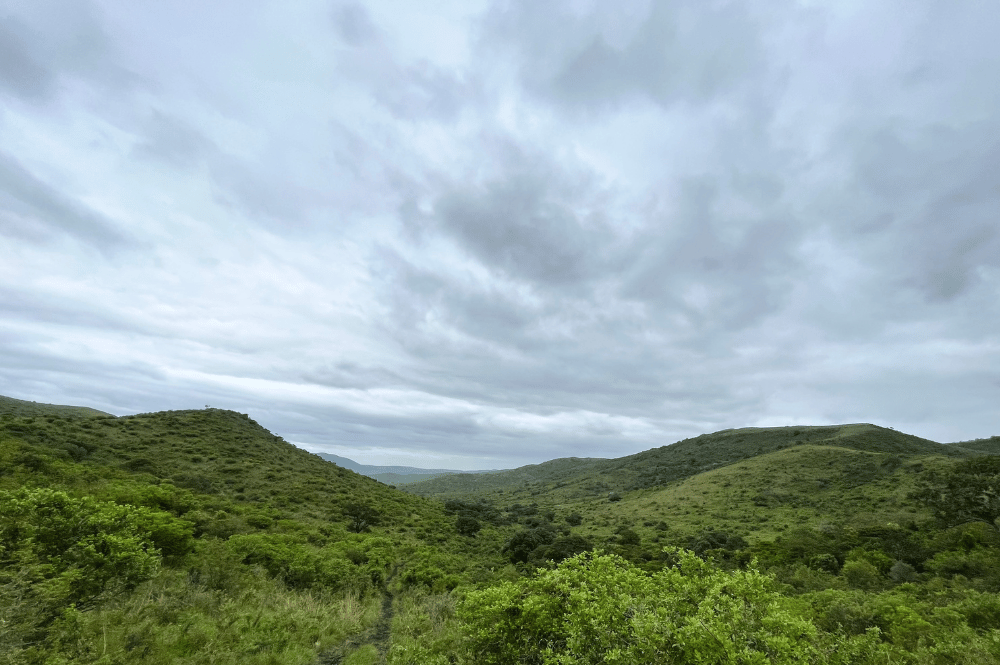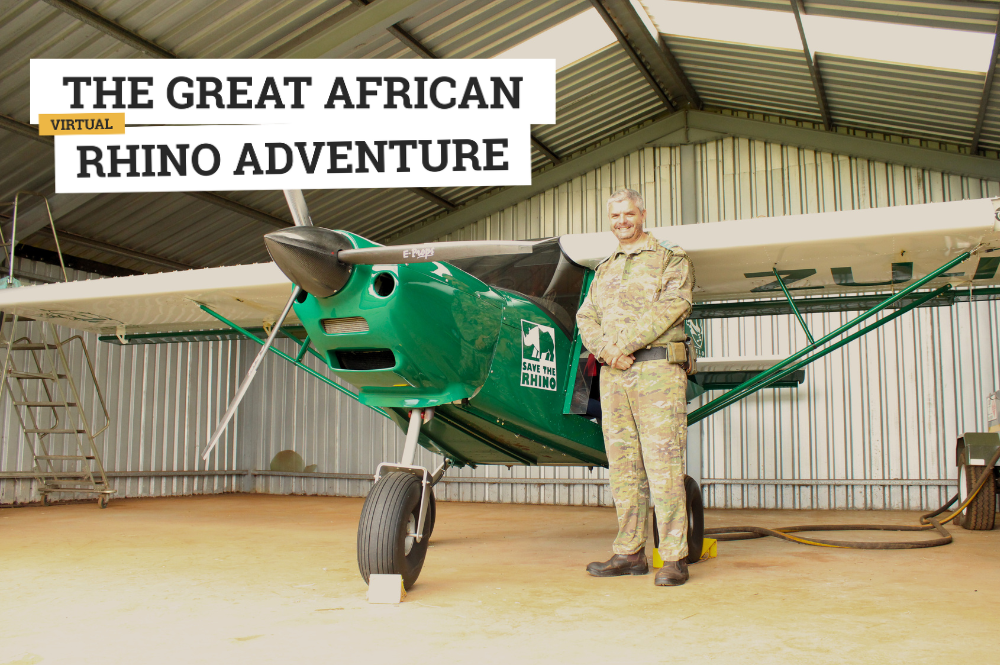

Credit: Save the Rhino
Meet the aerial surveillance team at Hluhluwe-iMfolozi Park
Hluhluwe-iMfolozi Park’s dense scrub, large predators and rocky terrain make surveying the Park on foot alone, very tough. Every day on-the-ground ranger teams monitor and protect rhinos in this landscape yet, with so much area to cover, they cannot get to every remote point in the park – that’s where the aerial team comes into play.
Dirk Swart, Section Ranger (and a pilot), leads the Savannah S Light Sport Aircraft’s operations. He shared his experiences with us, explaining what it’s like to work in the Aerial Team.
How big is Hluhluwe-iMfolozi Park (HiP), and what are the main difficulties the park faces?
At 960km², HiP is dwarfed by nearby Kruger, but it remains incredibly difficult to protect. Surrounded by communities and increasingly, more development, the Park’s multiple access points and relatively smaller size make it easy for criminals to enter, kill a rhino, remove its horn and be gone, within hours.
We’ve had a strong rhino population here for many years. But this success has put our endangered species under threat. Since the start of the current poaching crisis in 2008, rhino poaching in South Africa has skyrocketed. In our own Province, KwaZulu-Natal (KZN), the last few years have been devastating. In 2023, 325 rhinos were killed in the Province, compared to 93 in 2020.
Why is surveying the Park by air so important?
Rangers can only do so much. With the poaching surge in recent years, we are already so stretched, it’s impossible to cover the whole park on foot. But, working in tandem with aerial support, we can have a bigger impact.
“Our Field Rangers are tasked with working at night under all conditions and are under immense pressure and stress. Without their efforts, rhino poaching would be far worse. Their dedication and hard work are so important and should never be underestimated — or taken for granted”.
HiP’s Savannah S Light Sport Aircraft plays a vital role in aiding the Park’s rangers. Great distances can be covered within hours in what would otherwise take days. Surveying the Park for rhinos, and of course, poaching activities, the plane also acts as a deterrent to poaching gangs. Mid-flight, this fixed-wing aircraft has been used after gunshots have been heard, following up the report to determine if a rhino has been attacked. If arhino is found poached, the aircraft allows staff to quickly carry out follow-up operations including tracking suspects from the scene and supporting post-mortem investigations.
Other important tasks include fence-line checks to prevent animal escapes, as well as biological management work, such as checking water levels and monitoring important black rhinos.
Which of the two rhino species is easier to find from the air?
Whilst white rhinos can be easier to find on foot, aerial surveillance is more effective when looking for black rhinos. Around 30 black rhinos can be identified in a single five-hour patrol.
Identifying these rhinos, however, is another story! Photographing the rhinos’ unique ear notches, which help us identify individual animals, is a huge challenge, especially in tough weather conditions. However, the aerial team continue to support accurate population counts and aid photographs already been taken by the dedicated black rhino monitoring team.
How has the aircraft benefited Hluhluwe-iMfolozi Park?
In 2023, whilst flying over one section of the Park, one of our pilots detected a fresh rhino carcass, quickly forwarding its location to the Park’s Operations Room. Domestic hunting dogs were also spotted from the air and followed, leading the ground teams to the suspect’s house, where arrests were later made. Having eyes in the sky gave us the information to act quickly on this incident. Without the aerial team, we may never have found the suspects.
But rhinos are not the only threatened wildlife species living in HiP, and – using unique telemetry equipment to find radio-collared individuals – the aircraft has occasionally helped to monitor the lions and African wild dogs that also live in the Park.
Thanks to your continued support, the Savannah S Light Sport Aircraft has functioned as an eye in the sky throughout this troubled time in HiP, and is an asset to Hluhluwe-iMfolozi’s team.
Our next stop for the Great African Rhino Adventure is nearby uMkhuze Game Reserve – see you there!


